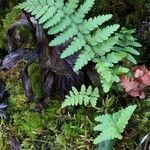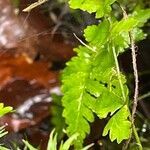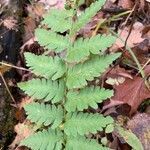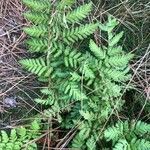Leaves dimorphic, 35--70 × 8--12 cm; fertile leaves dying back in winter; sterile leaves several, small, green through winter, forming "rosette." Petiole 1/4--1/3 length of leaf, scaly at least at base; scales scattered, tan. Blade green, narrowly lanceolate or with parallel sides, pinnate-pinnatifid, not glandular. Pinnae of fertile leaves twisted out of plane of blade and perpendicular to it, deltate; basal pinnae deltate, somewhat reduced, basal pinnules longer than adjacent pinnules, basal basiscopic pinnule and basal acroscopic pinnule equal; pinnule margins distantly serrate, with spiny teeth. Sori midway between midvein and margin of segments. Indusia lacking glands. 2 n = 164.
A fern.




